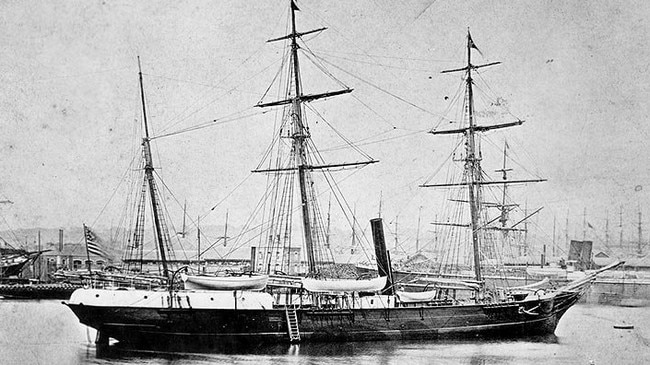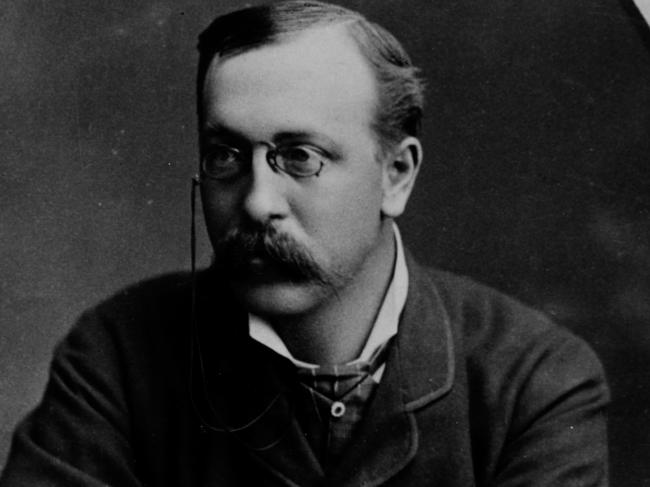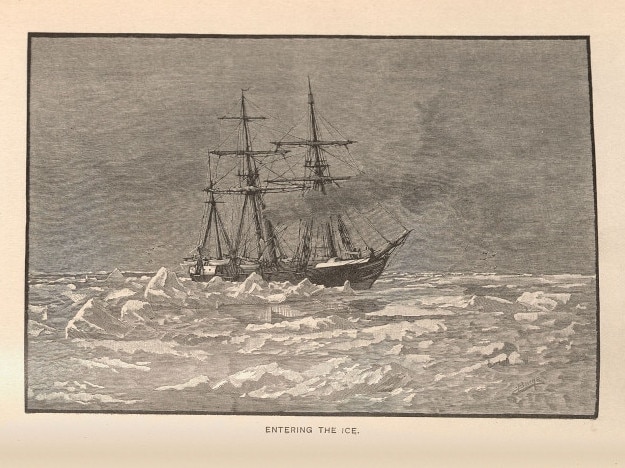George Washington de Long’s quest for North Pole doomed before it began
When pack ice sent George Washington de Long’s ship to the bottom of the Arctic sea he made a valiant but ultimately futile attempt to get all of his expedition team back to safety
Today in History
Don't miss out on the headlines from Today in History. Followed categories will be added to My News.
The pack ice in the Arctic is unforgiving. It was something the crew of USS Jeannette were not prepared for when they ventured north into the frozen realm, in a ill-starred quest to be the first to make it to the North Pole. As the commander of the ship and of the expedition Lieutenant George Washington de Long looked on as the ice that had locked up his ship seemed to finally open up. But the next day the ice was back and began to crush the Jeannette, eventually sending it to the bottom of the ocean.
It was now up to de Long to guide his men to safety. Although many, including de Long, didn’t make it, that he led his men as far as he did was a testament to his leadership skills and one of the great chapters in the annals of polar exploration. For a long time the explorer, born 175 years ago today, was a hero in his homeland and around the world, but his name has since been largely forgotten.

Born in New York on August 22, 1844, in his childhood de Long was fascinated by stories of naval heroes from the War of 1812 and set his sights on a naval career. Despite attempts by his father Levi to dissuade him, in 1861 he was admitted to the US Naval Academy. At the time the US was embroiled in it Civil War and his parents must have held deep concerns for his safety, but by the time he graduated in 1865 the war was over.
His first assignment was aboard the USS Canadaigua, serving as part of the European Station, the US fleet in European waters. During his rise through the ranks he took part in an 1873 expedition to Greenland aboard the Juniata, which was searching for the lost exploration vessel Polaris. It gave him a taste for exploring the icy north and he expressed a desire to lead another voyage — to the North Pole.
His opportunity arose in 1879, when newspaper tycoon Jame Gordon Bennett, owner of the New York Herald, offered to fund a US naval expedition. At this time the US was rebuilding after its destructive civil war and was keen to join other world powers in exploring uncharted realms to claim new lands. There were hopes that to the north of the US there lay unclaimed lands and perhaps even a navigable sea. German cartographer August Petermann had a theory that a warm current off Japan, named the Kuroshio, weakened the ice and flowed toward a polar sea. The navy accepted Bennett’s offer to fund a voyage to test that theory.

He purchased the former British Royal Navy vessel HMS Pandora, which had already been used in 1875 to search for traces of Sir John Franklin’s ill-fated 1845 Arctic expedition. Pandora was extensively refitted, renamed USS Jeanette, after Bennett’s sister who launched the renamed vessel, and in July 1879 it set sail under the command of de Long.
But in September the ship’s way was soon blocked by pack ice, disproving Petermann’s theory (which had been debunked shortly after de Long left, too late for the information to be of use to the crew of Jeanette). The captain and the crew waited in vain for a thaw as the ship drifted, stuck in the ice. In January 1880 the ice finally broke through the hull, but a frantic effort by two crewmen saved it from sinking.
For months de Long and his men endured the conditions, The ship drifted about 400km away from where it had first become ice bound, before it finally broke up and sank in June 1881 leaving the 33 men no choice but to strike out across the ice, dragging boats behind them to cross any open seas to find land.

The dogs intended to pull sleds had grown lethargic through months of little activity and many were shot, some for food. Eventually all of the dogs were killed when they proved mostly useless. Petermann’s maps proved to be inaccurate, showing settlements where there were none. After a long boat journey in which eight men aboard one of the boats perished, the rest of the expedition made landfall at the Lena Delta in Siberia in September 1881.
They struggled their way across the difficult terrain, several more members of the team dying along the way, including de Long on October 30. Only 13 men survived, with the help of Siberian natives. When the first survivors began arriving home in the US in May 1882 they were greeted as heroes. While their quest had been a failure their story of survival and de Long’s courage in keeping as many alive as he could cemented their place in the history of Arctic exploration.
An expedition later recovered de Long’s body and those of other members of the expedition, bringing them back to the US in 1884 for burial.

